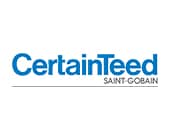In the quest for durable and aesthetically-pleasing roofing, homeowners are increasingly seeking alternatives to traditional shingles. Discover innovative materials that offer not only a fresh look but also enhanced durability and environmental benefits, paving the way for a smarter roofing choice.
What are Shingles?
Shingles serve as the protective and aesthetic outer layer of a roof, consisting of individual overlapping elements that shield the home from weather elements.
Traditionally flat and rectangular, these elements come in a myriad of materials, including asphalt, wood, slate, metal, plastic, and composite materials, each offering unique benefits and challenges.
Asphalt shingle roofs, for instance, enjoy widespread popularity for their cost-effectiveness, ease of installation, and versatile appearance, making them a go-to choice for many homeowners.
Choosing the right roofing material is pivotal, affecting not just the roof’s slope and structural integrity but also its durability and visual appeal. The selection of shingles dictates a home’s overall look and architectural style, contributing significantly to curb appeal.
Beyond aesthetics, the durability of traditional roofing materials is critical for safeguarding the structure against the elements over time. Opting for inferior shingles might save costs upfront but can lead to increased maintenance, repairs, or premature replacement, elevating long-term expenses.
Moreover, the utility of roofing shingles extends to energy efficiency. Different materials have varying levels of heat absorption and reflection, which can significantly impact a home’s internal temperature and, consequently, its energy consumption.
High-quality shingles that align with the building’s climatic needs can enhance comfort while reducing heating and cooling costs, underscoring the importance of thoughtful material selection in roofing projects.
Traditional Shingles
Traditional asphalt shingles are a staple in residential roofing, favored for their cost-effectiveness, variety in colors and styles, and straightforward installation.
Made from a base of fiberglass or organic material coated with asphalt and mineral granules, they offer a waterproof layer that mimics more expensive materials.
Pros:
- Asphalt shingles are budget-friendly
- Versatile in design
- They can be installed relatively quickly
- Reduces labor costs
Cons:
- Despite their popularity, they fall short in durability, with a lifespan of 20 to 30 years (the same as architectural shingles)
- They’re not environmentally friendly due to their petroleum base and the energy-intensive production process.
- Additionally, they require maintenance to address algae growth and can be damaged by extreme weather.
Common Issues:
Over time, shingles may crack, curl, or blow off, necessitating repairs or full replacement. Regular maintenance is needed to remove moss or algae and replace damaged shingles. The environmental impact of their production and disposal is also a concern for eco-conscious homeowners.
While traditional asphalt shingles offer an accessible roofing solution, their shorter lifespan and environmental footprint prompt homeowners to consider more sustainable, durable alternatives.
Sustainable Alternatives
Sustainable roofing options offer homeowners alternatives that enhance the aesthetic appeal of their homes and contribute positively to environmental conservation and energy efficiency.
Metal Roofing
The metal roof stands out for its exceptional durability, longevity, and environmental benefits. Crafted from recycled materials, it can be fully recycled at the end of its life, significantly reducing waste. Metal roofs reflect solar radiant heat, which can reduce cooling costs by 10-25%.
Their lifespan far exceeds traditional shingles, with metal roofs lasting 40-70 years with minimal maintenance required.
Wood Shakes or Wood Shingles
Wood shakes and shingles offer a timeless, natural aesthetic that complements various architectural styles. Made from renewable resources like cedar, they can provide better insulation than asphalt shingles.
However, natural materials require maintenance to prevent decay, mold, and fire hazards. Despite these drawbacks, their biodegradability and the sustainable forestry practices often used in their production make them an eco-friendly choice for roofing.
Slate Roofing
Slate roofing is prized for its natural beauty, durability, and longevity, with a lifespan that can exceed 100 years. It’s made from natural slate rock, which requires minimal processing and is completely recyclable.
Slate roofs are highly resistant to harsh weather conditions, making them a long-lasting, albeit more expensive, roofing option. Their aesthetic appeal and the high-end look make them a sought-after choice for luxury homes, blending sustainability with elegance.
Installation and Maintenance
The installation and maintenance of roofing materials vary significantly across sustainable alternatives. Metal roofing, known for its ease of installation, can be more cost-effective in the long term due to minimal maintenance needs and resistance to environmental wear.
Wood shakes or shingles, while offering aesthetic appeal, demand higher maintenance to prevent decay and mold, potentially increasing long-term costs.
Slate roofing, on the other hand, requires skilled installation due to its weight and complexity, but its maintenance is relatively low, given its exceptional durability.
Each material presents a unique balance of upfront installation costs, ongoing maintenance requirements, and overall longevity, influencing the total cost of ownership and the practicality of each option for different homes.
Choose the Right Shingle Alternative for Your Home!
Selecting the ideal shingle alternative for your home is a crucial decision. With options ranging from metal to slate, each offers unique benefits. For expert advice, installation, repair, and maintenance, trust Revival Roofing.Our team ensures your roofing choice meets your aesthetic preferences and enhances your home’s durability and sustainability. Let Revival Roofing elevate your home’s roof today.








